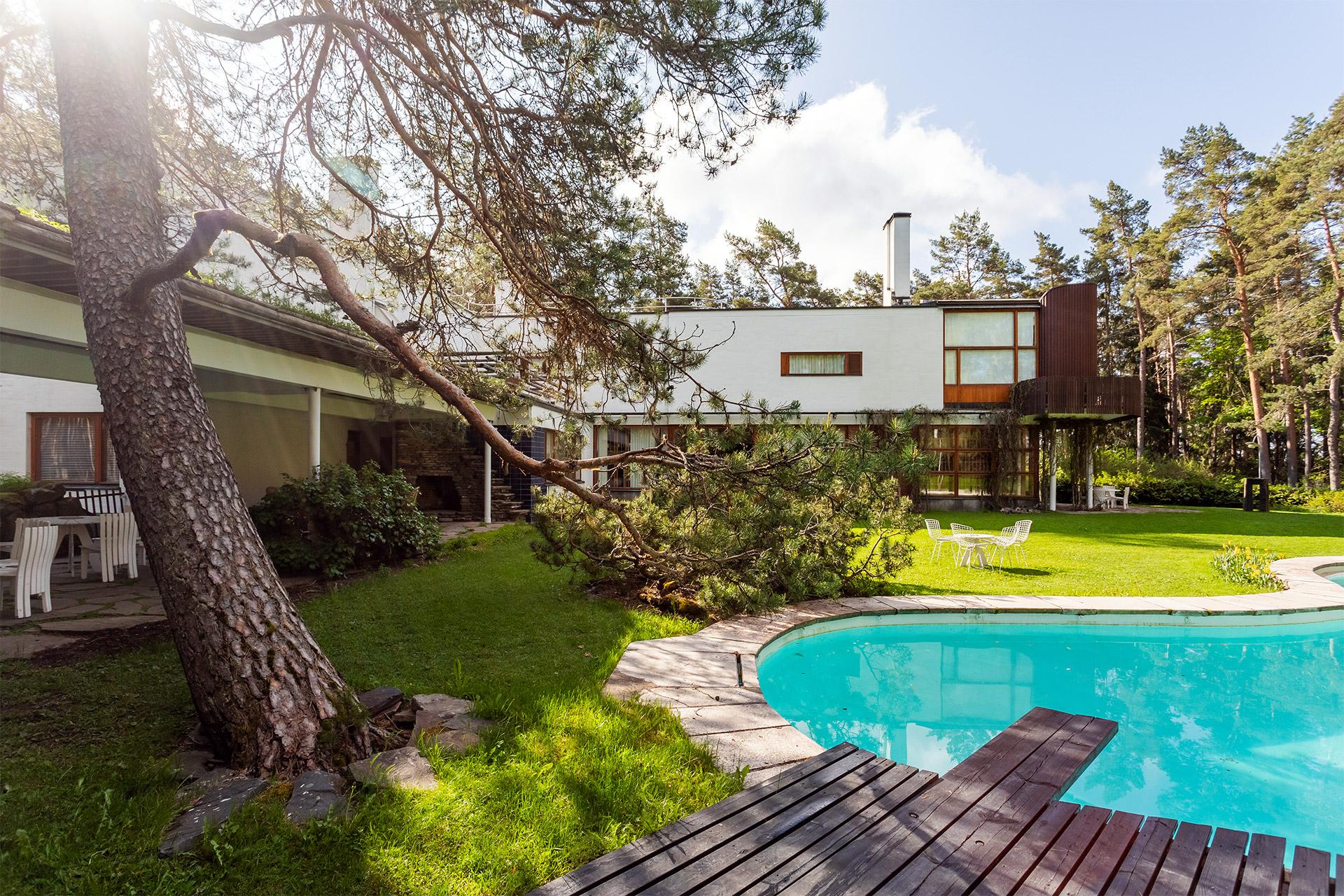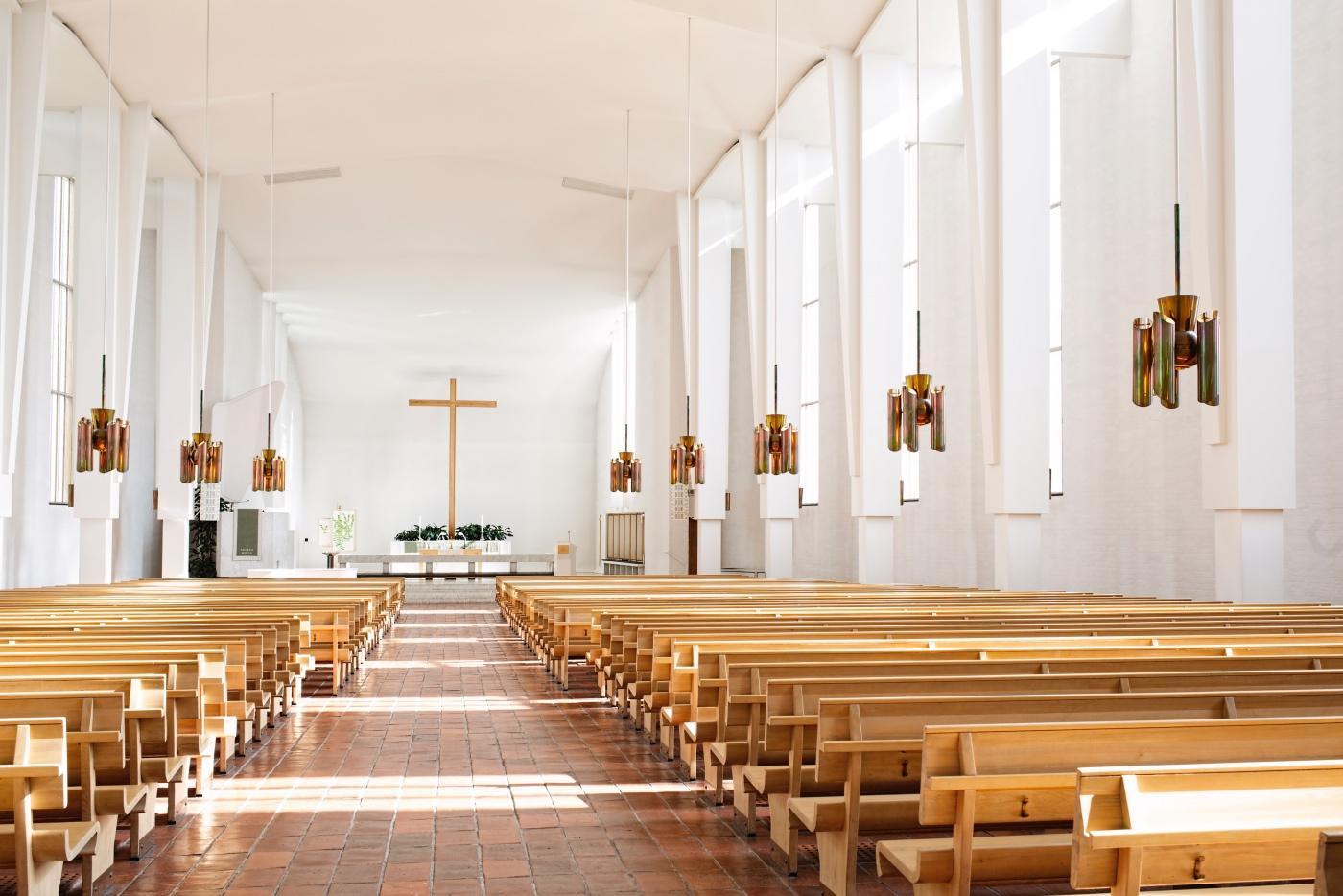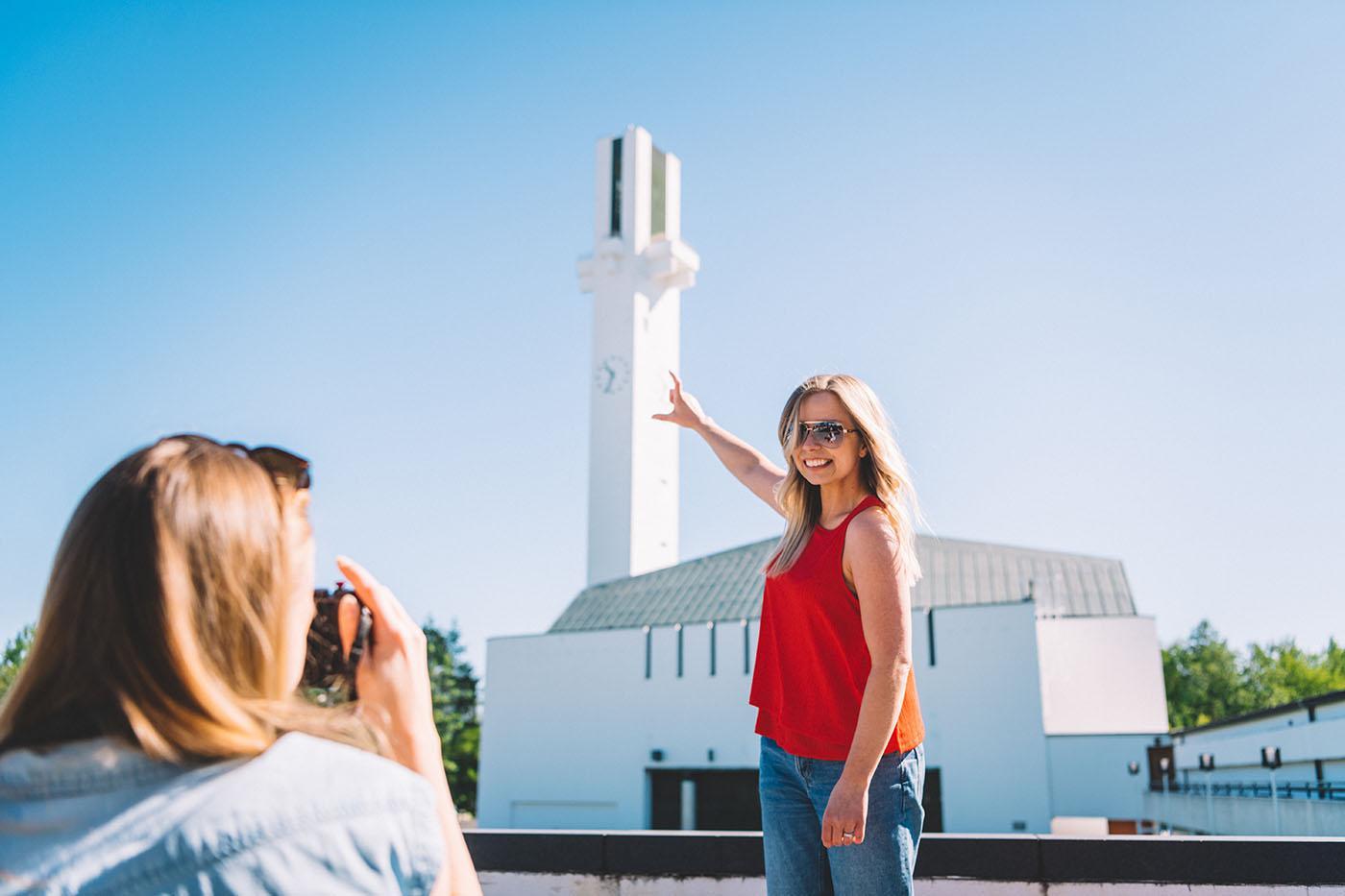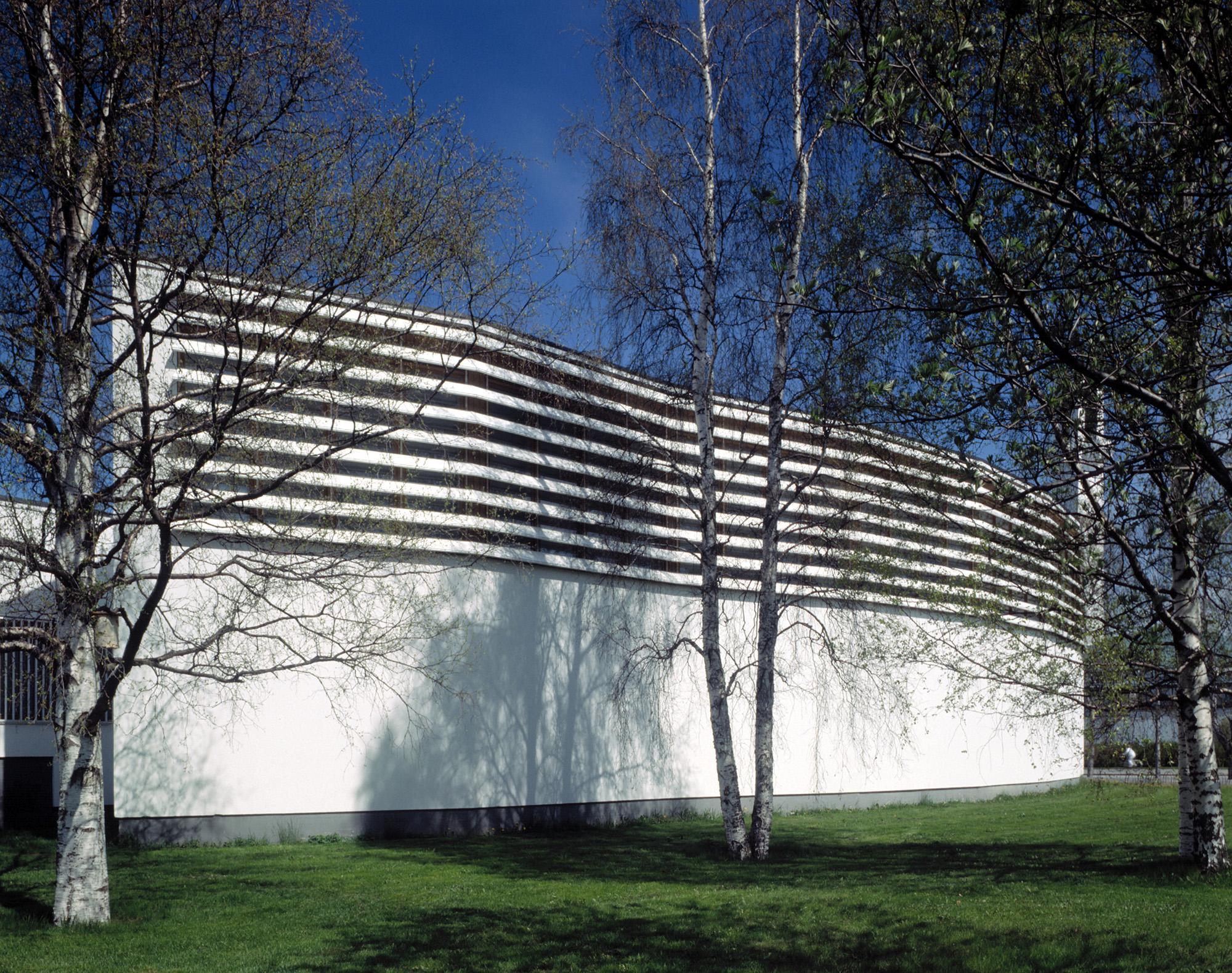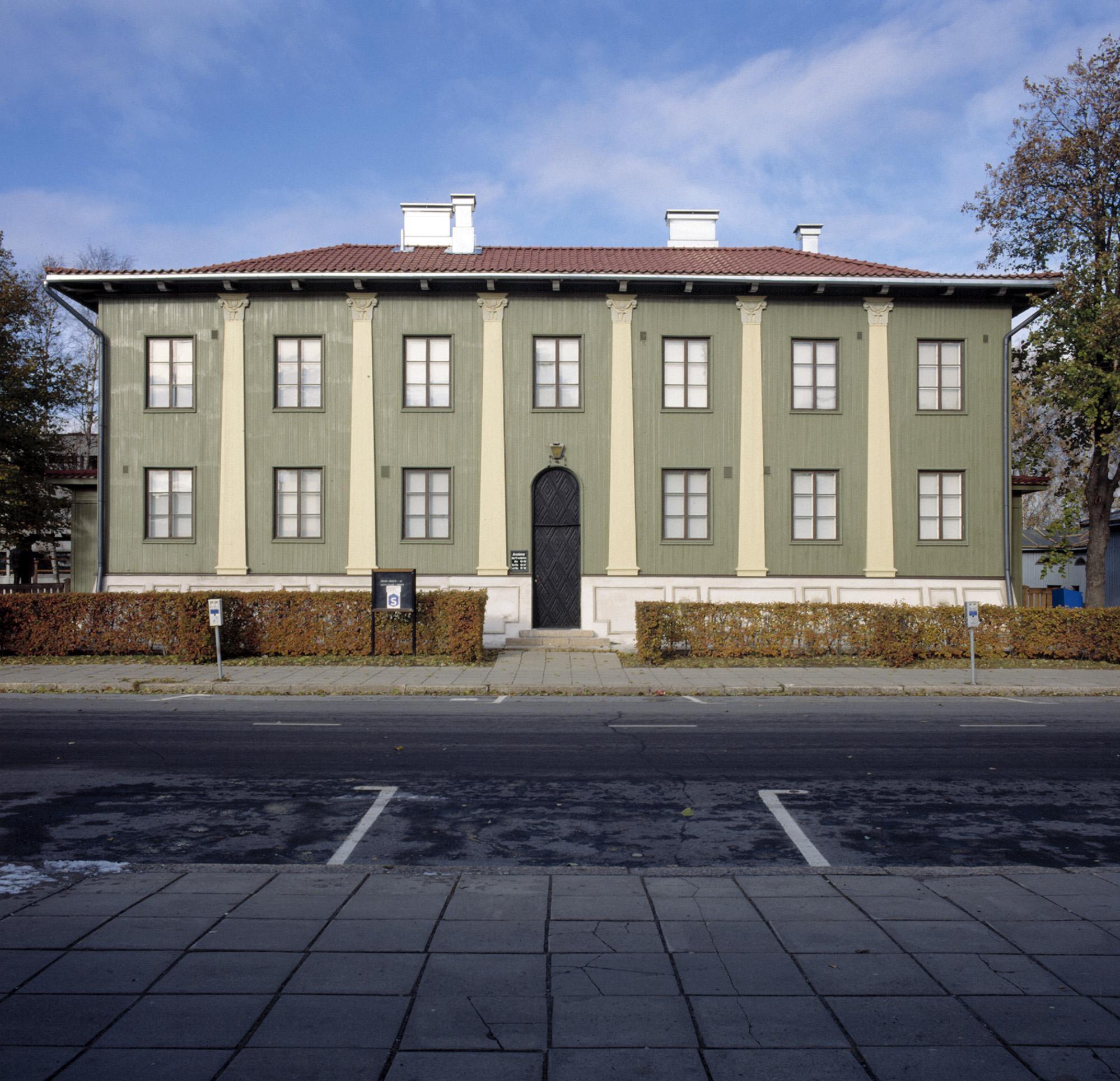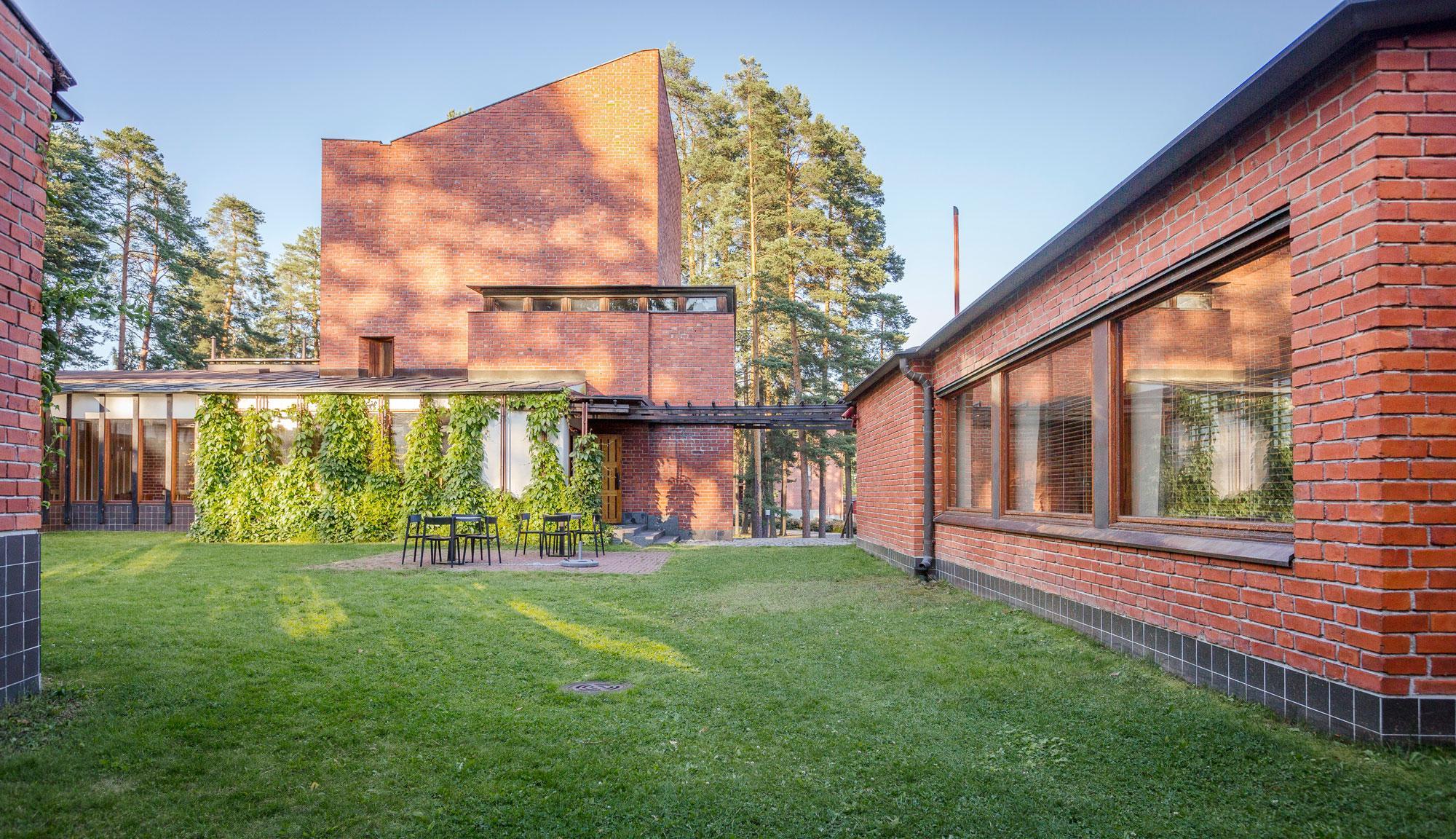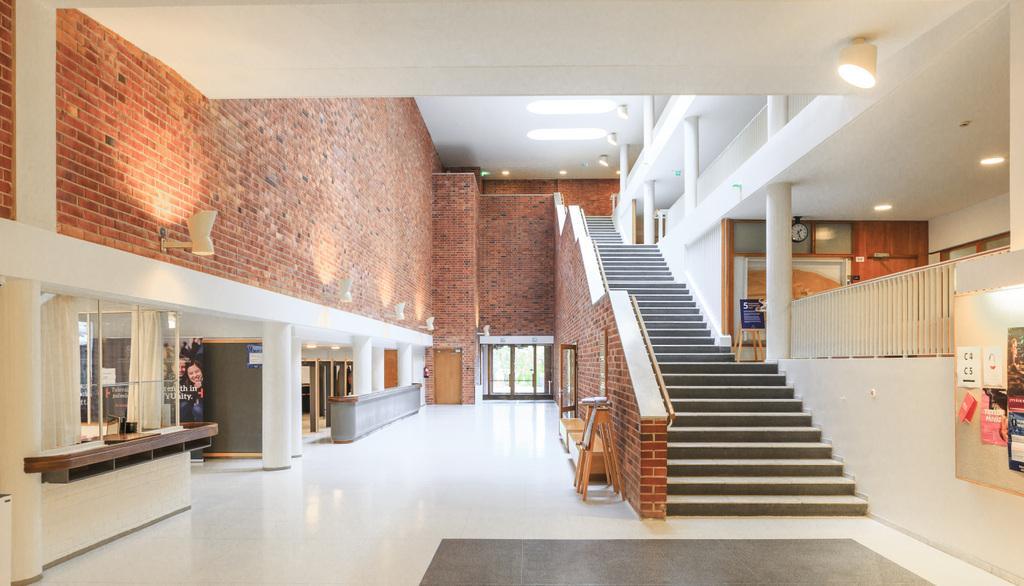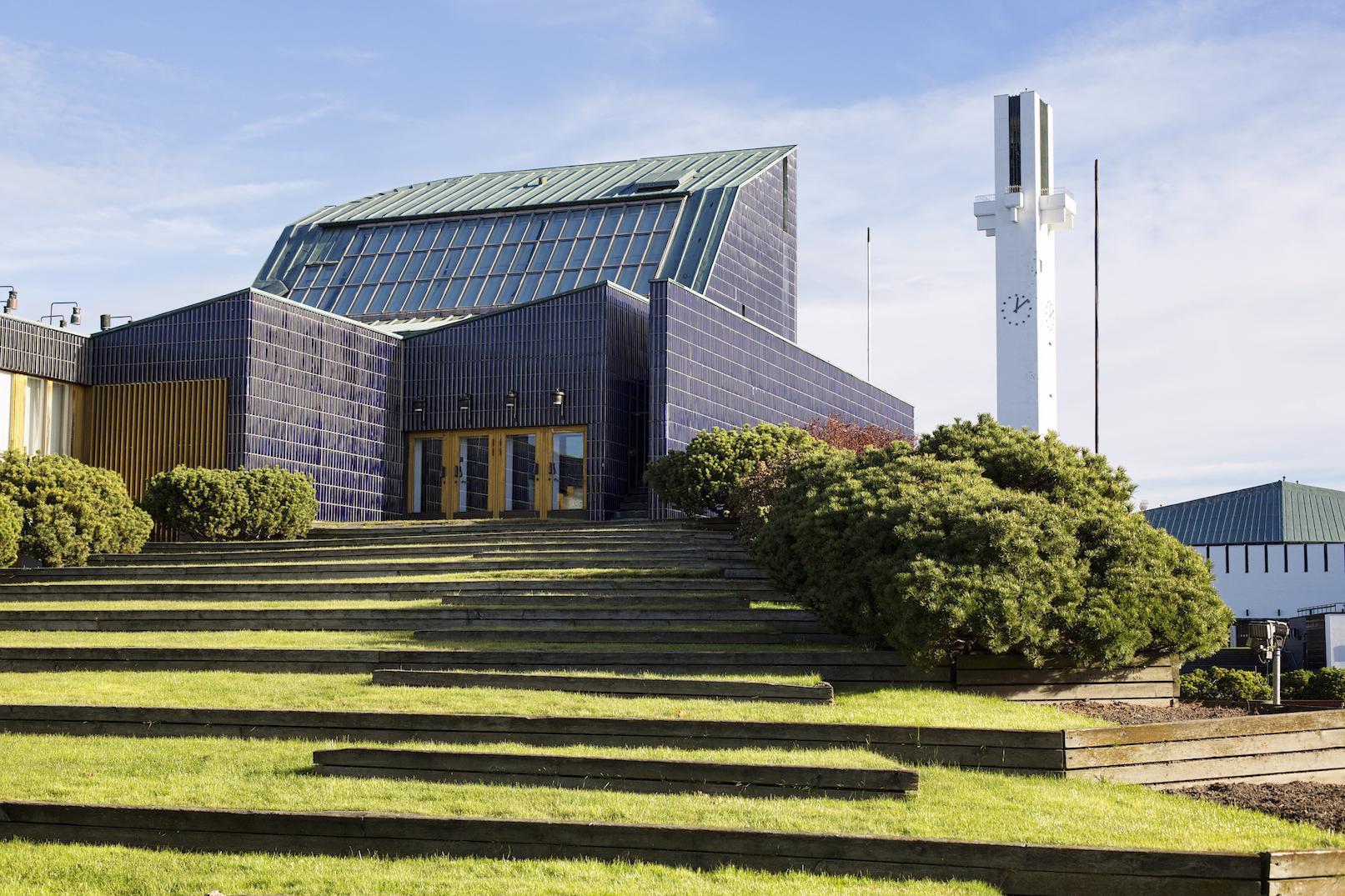This seven-night tour allows you to discover the top cultural sights in Western Finland. You can begin your tour from Turku or Vaasa as both towns are connected to Sweden by car ferry (Viking Line, Tallink Silja or Wasaline). You may head in either direction and take the tour throughout the year. You can manage the duration and route according to your own timetable.
Location: Seinäjoki
Cross Of The Plains and the Parish Centre
Aalto took part in a competition for a large church and parish centre announced by Seinäjoki parish in 1951, sending in an entry marked “Lakeuksien risti” (“Cross of the plains”).
Instead of placing the parish rooms under the church or in a smaller, separate building, as the other entrants had done, Aalto seized upon the big religious events commonly organized in Osthrobotnia in summer. He laid out a large piazza, loping down towards the church and girded by the parish facilities, in front of the church´s main facade. He laid out a large piazza, loping down towards the church and girded by the parish facilities, in front of the church´s main facade. This space-consuming solution obliged Aalto to exceed the prescribed construction limit by some twenty metres, which prevented the jury from awarding him a prize. The jury awarded Aalto´s entry a purchase and recommended it as the basis for implementation.
Aalto was commissioned to develop the plain further. The church was built between 1958 and 1960 and the large parish centre in front between 1964 and 1966. The church was basically build to the competition design, except that Aalto had hoped to use black granite as the facade material; for reasons of cost, however, he had to be content with brick rendered white, only the side chapel being faced with granite.
The main characteristics of the church complex are as follows: on the north side stands the campanile, 65 metres high, in the shape of a stylized cross. Monumentally vertical, visible from afar in the endless plains, it is the town´s symbol. The slightly wedge-shaped, symmetrical church interior is 47 metres long and provides seating for a congregation of 1400. The vestry lies behind the altar, and between it and the campanile is a tiny baptistery and wedding chapel with a stained-glass work by Aalto. Aalto also designed the church textiles and communion vessels.
The parish centre´s main divergence from the competition entry is the open staircase on an axis from the main facade of the church to the town hall square (built up later). This staircase separates the two wings of the building, which contain a large assembly hall, catering facilities for the congregation, a room for confirmation classes, a clubroom, offices, and several apartments for employees.
Guided walking tour of the Aalto Centre in Seinäjoki
As an architectural whole, the Administrative and Cultural Centre in Seinäjoki is unique on a global scale.
The Seinäjoki Aalto Centre was designed by world famous architect Alvar Aalto. As an architectural whole, the Administrative and Cultural Centre in Seinäjoki is unique on a global scale. The six buildings are gathered right in the middle of Seinäjoki city centre, within walking distance from Seinäjoki railway station.
A guided walking tour led by a local guide from Seinäjoki will include the The Cross Of The Plains Church, Seinäjoki City Hall, Seinäjoki City Theatre, Aalto Library and the world’s largest collection of Aalto glassware. You will also see the architecturally spectacular Apila Library, designed by JKMM Architects.
Aalto Library in Seinäjoki
The Seinäjoki Library was designed as a part of the Aalto Centre in Seinäjoki and the building completed in 1965. Originally the public and other working spaces were mainly located on the ground floor of the building whereas storage and exhibition spaces were located downstairs. Aalto also designed the main part of the built in fixtures, furniture and light fixtures as a part of the entity of the building.
Aalto’s library functioned as the main library of the city until 2012. In 2012 the new main library Apila was completed and Aalto’s library was connected to it with a under ground passage. Aalto’s library was renovated to its original state during 2012-2015. The renovation was considered to be a great success and an example to other renovation projects. Also the furniture and the lighting for the reading room were restored during the renovation and were then installed in their original locations. Nowadays the regional collections, genealogy and a separate children’s literature department operate in the library. Arts, architecture, history and ethnology literature is also placed in Aalto’s library.
Aalto’s Seinäjoki library also has an important collection of design glass by Aino and Alvar Aalto on display in the library’s original magazine reading room. The collection is owned by the city of Seinäjoki.
Aalto’s Seinäjoki library has a very simplified façade and the strips of windows that are covered with slats dominate it. It is considered to represent a free-form hall library type. A lot of attention was given to the lighting of the building and especially in capitalizing the natural daylight. The lending desk is located right in the middle of the building. Behind it Aalto designed a lowered reading space which is a typical feature in Aalto’s libraries. The layout of the building combines forms of a rectangle and a fan, which also plays an important role in the surveillance of the building.
Seinäjoki Defence Corps building
The Defence Corps building was commissioned by the Southern Ostrobothnia Defence Corps, which used the three-storey building with mixed functions as its headquarters. The main building was originally used as offices for the Civil Guard of South Ostrobothnia and the Lotta Svärd Association. The top tier of the building was in residential use.
The semi-subterranean ground floor, which contains a circular assembly hall, foyer and cloakroom, is built of stone; the office level and the residential storey (at the top with its own access stairs) are of wood. Together with the main building, a separate outbuilding was designed and erected on the other side of the courtyard. The ground floor of this two-storey building of rendered brick contains a garage, guardhouse, arms depot, sauna, and laundry; there are four small apartments in the upper storey. An unusual stair arrangement on both sides of the arched entrance provides separate access to most of the various facilities. One of the short sides of the courtyard is enclosed by a low wooden storehouse, designed some years later. The courtyard itself was intended as a drill and parade ground.
After the Second World War the building was re purposed for other uses. Since then many tenants have been operating in the building, including The Federation of Finnish youth association, a school and a travel agency. Nowadays the building is managed by the Provincial Museum of Southern Ostrobothnia. Currently it houses the Civil Guard and Lotta Svärd Museum. The main building holds museum exhibition and meeting spaces, an info booth and museum shop. The outbuilding has more exhibition spaces and a administration space for the museum.
The Defence Corps building has been preserved in its original condition and it’s buildings and their yard have also been protected under the law regarding building protection since 2002.
The building represents refined neoclassicism and functionalist features as well as Ostrobothnian construction heritage. The building’s unusual stair hall, facade pilasters, and assembly hall painted in Pompeiian style make it one of the chief works of Alvar Aalto’s Neo-Classical period. Some part of the decorations in the buildings, including furniture, lamps and ornament details were also designed by Aalto.
Aalto originally designed a loggia-like staircase for the end entrance, but it was not built.
The Suojeluskuntalainen statue, work by artist Pentti Papinaho is located in the yard of The Defence Corps building.
Early and later works of architect Alvar Aalto
Travel in the sceneries from the various phases in the life of Alvar Aalto, from Seinäjoki via Kuortane and Alajärvi to Jyväskylä in the lake district of Finland. See the master’s birthplace and family grave, some of his most famous competition works as well as his early and later works.
Alvar Aalto designed a world-famous centre of administrative and cultural buildings in Seinäjoki. The landmark of the Aalto centre, the Cross of the Plains Church, soars to a height of approx. 65 metres. The renovated Aalto Library exhibits the world’s biggest private collection of Aalto glassware.
The architect was born in Kuortane and he used to spend his summers in Alajärvi, which is the home for the first buildings designed by the young architect student and for the last creation of Aalto’s office. In Alajärvi, the tour participants can also visit the recently renovated Villa Väinölä, the house that Alvar Aalto designed for his brother. The countryside provided Alvar Aalto with a setting for relaxation during his hectic creative period.
The Jyväskylä region contains more buildings designed by the master architect than any other region in the entire world. Among as many as 28 attractions, you can choose for example the Alvar Aalto Museum, Muurame Church and Säynätsalo Town Hall, which is considered Aalto’s most prominent work in the red brick era. Alvar Aalto also went to school, started a family and launched his prestigious career in Jyväskylä.
The gems of Aalto’s architecture in Helsinki, Jyväskylä and Seinäjoki
Experience Jyväskylä the capital of Alvar Aalto’s architecture combined with Seinäjoki where Aalto also left an indelible mark.
Jyväskylä, which is located in the heart of the Finnish Lakeland boasts more Alvar Aalto buildings from different periods of his career than any other city in the world. Jyväskylä has thus really earned its title as the Capital Alvar Aalto ‘s Architecture.
Alvar Aalto has left an indelible mark also on the city of Seinäjoki, situated amid the open landscapes of Ostrobothnia. The Aalto Centre in Seinäjoki is a globally significant architectural complex at the cutting edge of modern architecture.
A visit to both cities will give an in-depth insight into Alvar Aalto’s architectural thinking through the decades, while also hearing exciting stories about Aalto not only as an architect but as a designer and a private person. During the tour, you will also see the beauty of the Finnish Lakeland and the vast open fields of Ostrobothnia and enjoy a glimpse of the traditional Finnish way of life in the two towns and the nearby countryside.
Seinäjoki Civic Centre
As an architectural whole, the Seinäjoki Civic Centre, or Administrative and Cultural Centre of Seinäjoki, is unique on a global scale. Seinäjoki is also the location of the Defence Corps Building built in 1924-26, one of the rare works from Aalto’s youth. The Administrative and Cultural Centre consists of six buildings and the Civic Square completed in 1988.
Aalto Centre
The Administrative and Cultural Centre in Seinäjoki emerged from two architectural competitions, and it was built in 1958 to 1988.
Alvar Aalto won a church architecture competition arranged by the Parish of Seinäjoki with his plan “Lakeuksien risti”, Cross of the Plains, in 1951. Seven years later, he won the design competition for the centre of Seinäjoki. Aalto was commissioned to design the town hall, library, theatre and government office building, all of which he had outlined in his competition suggestion.
Aalto’s architectural office designed not only the buildings of the Administrative and Cultural Centre but also the outdoor lighting fixtures, barriers, surface materials for yard areas and plants for the Centre.
Civic Square in Seinäjoki
Alvar Aalto’s plans for the centre of Seinäjoki were based on monumental but easily approachable squares and other open areas between public buildings. When Aalto was young, he admired the antique cultures, and this is reflected as a forum which was also influenced by the Italian piazzas.
The buildings around the Civic Square in Seinäjoki – the Town hall, Library and Seinäjoki theatre – border the square paved with granite paving and cobblestone. According to Aalto’s suggestion, the square was designed for conferences and summer meetings, and of course as a meeting place of citizens. Alvar Aalto wished that squares intended for the assembly of people would promote a “new renaissance” for the forming and exchange of opinions through social interaction.
The Aalto Centre was built gradually. The last part to be completed was the Civic Square with its fountain and plantings. The paving of the square continues on the eastern side across the street, linking the administrative and cultural buildings to the church buildings. This constitutes an overall work of art of six buildings and the square.
